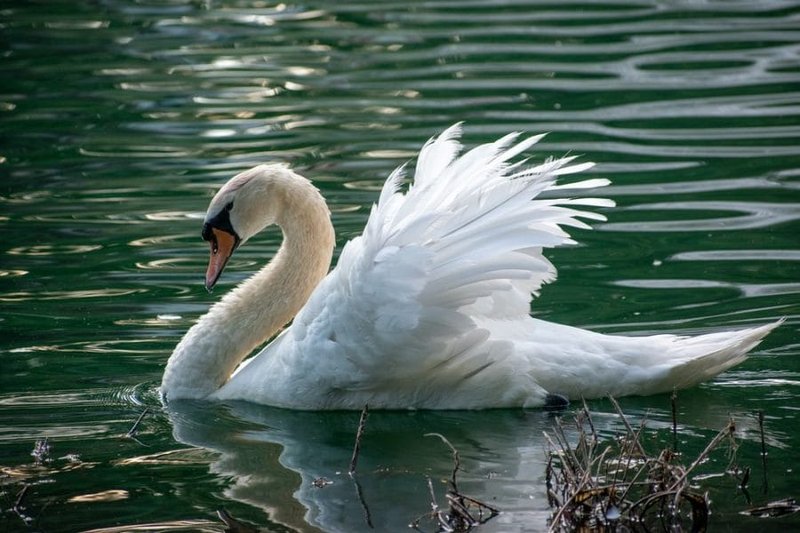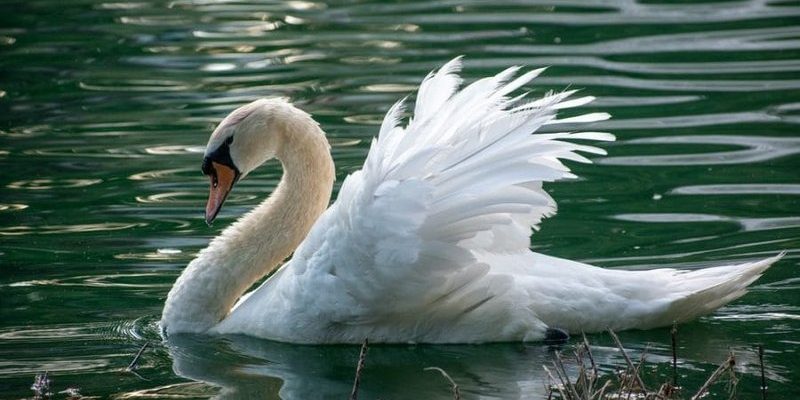
Swan identification is a bit like a game of clues. You need to pay attention to various characteristics, like size, color, and behavior. Once you know what to look for, spotting a swan becomes much simpler. So, grab a cup of coffee, and let’s explore the charming world of swans together!
Understanding the Different Types of Swans
There are several species of swans that you might encounter in the wild, each with unique traits. The most common types include the Mute Swan, the Trumpeter Swan, and the Tundra Swan. Knowing the differences among these swans can help you identify them more easily.
- Mute Swans are perhaps the most recognized, thanks to their stunning white plumage and distinctive orange beaks. They tend to be quite large, measuring about 4 to 5 feet in length.
- Trumpeter Swans are the heaviest of all swan species, with elegant necks and long wings. Their calls sound more like a trumpet, hence the name.
- Tundra Swans, often found in northern regions, have shorter necks and a more graceful, streamlined look. They may also display a slight yellow patch near their eyes.
Each type of swan has its own habitat preferences, too. Mute swans are often found in urban parks, while trumpeters prefer larger bodies of water in more rural areas. Knowing where to look increases your chances of spotting them.
Physical Characteristics to Look For
When identifying a swan, it’s all about the details. Let’s break down some key physical characteristics that can help you tell them apart from ducks or geese.
Size and Shape: Swans are significantly larger than most waterfowl. With their long necks and large bodies, they easily stand out. A mature swan can weigh anywhere from 15 to 30 pounds, making them quite a sight!
Coloration: Most swans sport white feathers, but don’t be fooled. Some can also be gray or even black. For example, the black swan is native to Australia but occasionally found in the U.S. When observing a swan, take note of the color of their beak, which can also be a great clue.
Neck Length: A swan’s neck is a defining feature. They have long, graceful necks that can be almost as long as their bodies. When they’re swimming, their necks are often curved in a beautiful arc, making them easily identifiable.
Behavioral Traits of Swans
Observing behavior is another reliable method for identifying swans. Their actions in the water can be very telling.
Swimming Style: Swans are known for their elegant and smooth swimming patterns. They glide effortlessly—almost like they’re floating on air. Other birds, like ducks and geese, may paddle more frantically, which can help you differentiate between them.
Feeding Habits: Swans are herbivores, often seen foraging for aquatic plants. If you spot a bird dipping its head and neck down into the water, it’s likely a swan, especially if it looks like it’s elegantly reaching for treats below the surface.
Social Behavior: Swans are typically social birds, often found in pairs or small family groups. If you see two swans swimming closely together, they are likely a mating pair or a family unit, adding to their romantic image.
Where to Spot Swans
So, where should you head if you want to catch a glimpse of these beautiful birds? Swans prefer calm bodies of water, but let’s dig a little deeper.
Lakes and Ponds: Mute swans are commonly found in parks and gardens where there are lakes or ponds. These environments mimic their natural habitats perfectly and often attract swans year-round.
Rivers and Wetlands: Trumpeter and Tundra swans prefer larger rivers and wetland areas. They often migrate between these habitats, especially during breeding season, so keep an eye out in late fall and early spring.
Urban Areas: Believe it or not, many cities have populations of mute swans. Parks and botanical gardens frequently create ideal habitats for these birds, making it possible to see them even in urban settings.
Using Tools and Resources for Identification
If you’re serious about swan watching, there are plenty of resources and tools that can help you.
Field Guides: Investing in a good field guide on birds can elevate your swan-spotting game. These guides usually offer illustrations and descriptions, helping you match what you see with what you know.
Birdwatching Apps: There are many mobile apps available that can assist in identifying various bird species, including swans. Features like photo identification and sound recordings can enhance your experience.
Binoculars: A decent pair of binoculars can make a significant difference. They allow you to observe swans without getting too close and disturbing them. Look for binoculars with a higher magnification to get a clearer view.
Why It Matters to Identify Swans
You might be wondering why it’s important to learn how to identify swans in the wild. Understanding these beautiful creatures enriches your outdoor experiences and promotes wildlife conservation.
Conservation Efforts: By recognizing swan species, you can contribute to conservation efforts. Reporting swan sightings can help researchers track populations and health, which is vital for their protection.
Building Connections: Knowing how to spot these elegant creatures can foster a deeper appreciation for nature. When you recognize their behaviors and habitats, you start to connect with wildlife on a more personal level.
Enjoying Nature More Fully: Lastly, being able to identify swans makes your time outdoors more enjoyable. It’s like joining a secret club of nature lovers who understand and appreciate the beauty around them.
In conclusion, identifying a swan in the wild can be a delightful challenge. Whether you’re a seasoned birdwatcher or just someone who enjoys a day at the park, knowing the characteristics, behaviors, and habitats of swans opens up a whole new world of observation. So next time you’re near water, take a moment to look out for these elegant birds. You might just find yourself mesmerized!

